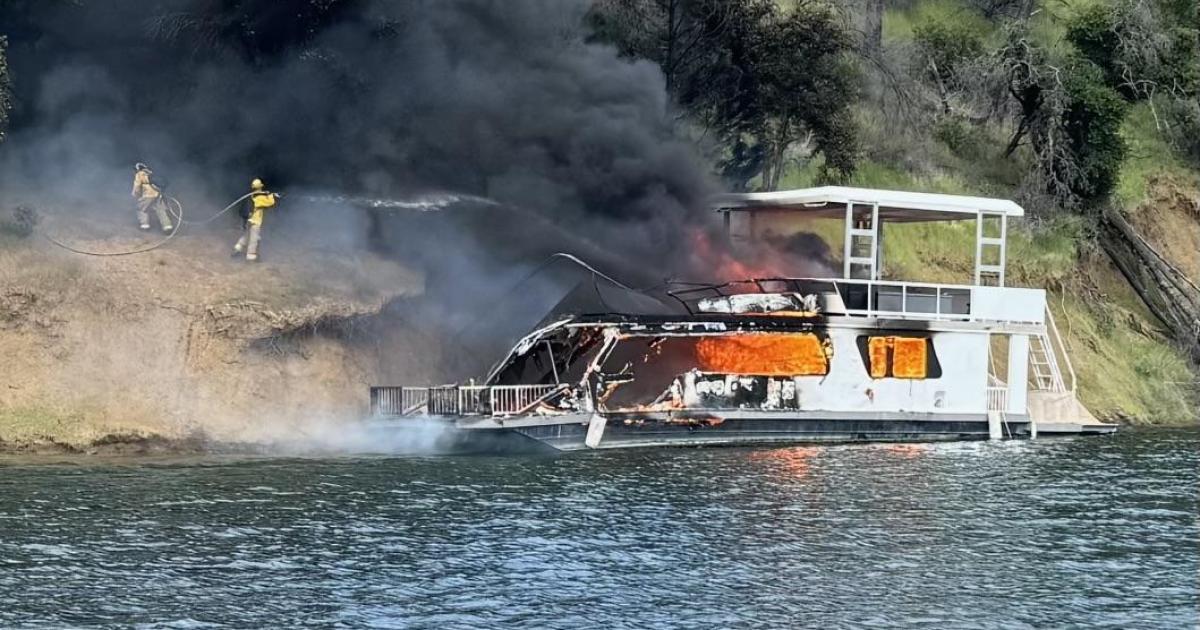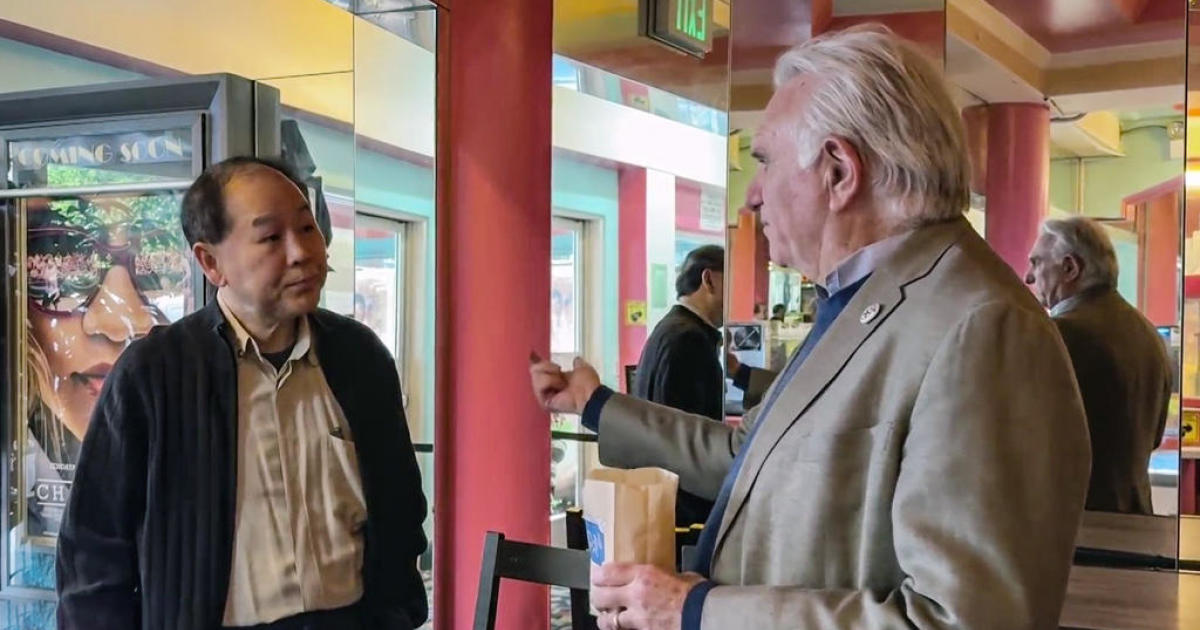Potent Atmospheric River Raises Mudslide, Flood Concerns In North Bay
SAN FRANCISCO (CBS SF) -- An atmospheric river streaming in from north of Hawaii, packing torrential rain, gusty winds and blinding snowstorms, slammed into Northern California Monday, bringing with it the threat of flash flooding and mudslides across the Bay Area.
The National Weather Service has issued a flash flood watch for the entire Bay Area ending late Tuesday night. Over the next 48 hours, NWS forecasters warned that rainfall totals in the North Bay could range from 4-to-6 inches near the coast and in the valleys and 6-to-12 inches in the hills and mountains.
"Flash flooding is possible from this evening through Tuesday night," the weather service said. "Urban flooding in low lying areas is likely. Widespread shallow landslides, rockslides, and debris flows are likely in steep terrain."
A flood watch is in effect for all North Bay counties through Wednesday night. There is the potential that parts of the Bay Area could get more rain than was received from the atmospheric river event two weeks ago.
KPIX 5 Meteorologist Paul Deanno said Tuesday will be the stormiest day, with heavy rainfall expected across the region. The morning commute and the evening commute will both be severely impacted by the heavy precipitation. The steady rain will likely end Wednesday morning, but scattered showers will linger through the day.
Forecasters said Santa Rosa could receive more than 5.62 inches, San Rafael 4.5 inches, San Francisco and Napa nearly 4 inches and San Jose 2.69 inches by the time the river moves on late Wednesday.
According the National Oceanic and Atmospheric Administration, runoff from the downpours will send the Russian River over its banks. The river was expected to hit flood stage in Guerneville about 4 a.m. Wednesday and crest at about 37.5 feet Wednesday evening.
Flooding is also forecast on the Napa River from Tuesday evening through Thursday morning because of heavy rains, the National Weather Service said Monday.
The weather service additionally said river flooding is possible on the Guadalupe and Carmel Rivers on Tuesday night and that flash flooding is a threat in the central and southern Bay Area and Santa Cruz County from Tuesday afternoon through Wednesday morning.
Meanwhile, predictions of as much as 5-8 inches in Marin County had hillside residents in Sausalito casting a wary eye toward the city's picturesque hills in the wake of slide that has already damaged several homes earlier this month.
The North Bay was taking the initial brunt of the storm early Monday evening. Sonoma County late Monday opened its emergency operations center to deal with the potential flooding and mudslides.
Two fir trees fell at about 4:45 p.m. Monday on the 18000 block of Hwy 116 in Guerneville, tearing off a large corner of a hillside residence.
At the top of Sausalito Boulevard, the work to recover from the last atmospheric river is still in full swing, with tarps going down on the tattered hillside and utility poles going up.
David Holue has lived in Sausalito for 15 years. His home is a few hundred yards from the first mudslide – and a few hundred yards in the other direction, more rocks have fallen from their mountain perch. David was evacuated in the last slide, but is less concerned about this storm.
"I'm feeling okay about it. I just don't think we're quite the same level of moisture that we were a few weeks ago -- where we were super saturated and then a big storm came. I think we've had a few days for things to drain out a little bit and I don't think we're in quite as much danger," Holue told KPIX 5.
Despite that fact, David and neighbors have been looking at topographic maps of Sausalito assessing relative risk on the hillside,
"I think it's really very specific to where you are. Again, I don't feel like where I am right here -- even though its only a few hundred yards down the road. I don't think we're in a tremendous amount of risk," said Holue.
Novato police sent out a reminder that a Flash Flood Watch was in effect for Marin County from Monday through late Wednesday evening.
In the South Bay, Lexington Reservoir near Los Gatos in almost completely full. The hillsides are so saturated the rain isn't soaking into the soil anymore. The Santa Cruz Mountains are expected to receive another five-to-eight inches of rain.
The storm front will also be packing gusty winds. The weather service issued an advisory for from 25 to 35 mph with gusts up to 50 mph.
"Downed trees and power outages are possible with these winds with saturated soils," the weather service said. "Southerly winds will increase and become locally gusty by (Monday) afternoon over the region`s higher elevations as well as along the coastline."
In the Sierra, the storm front was poised to create chaos with as much as 80 inches of snow predicted for Donner Summit and 48 inches on Echo Summit. Travel with be difficult if not impossible.
The weather service issued a series of watchings and watches for the region stemming from Monday through early Thursday. Among them was a winter storm warning for Tahoe.
"Heavy snow is expected," the weather service warned. "3-Day storm total snow accumulation of 2 to 4 feet (at lake level), expect 4 to 8 feet above 7000 feet. Winds gusting as high as 60 mph with gusts over 140 mph for the Sierra ridges. Periods of white-out conditions are likely."
The snow will add to already record February totals for snow at the local ski resorts. Squaw Valley has received 21 feet of snow to set an all-time February record with another 4-6 feet likely by the end of the month on Wednesday.
Homewood has gotten 23 feet, Heavenly and Kirkwood mountain resorts have each received 20 feet of snow this month.
Diamond Peak's previous record of 134 inches for the month has been crushed by the 172 inches it had received this year as of last Thursday.
"We broke our February snowfall record on Feb. 15," Jaclyn Ream, Diamond Peak's marketing coordinator told the Tahoe Daily Tribune. "Our previous record was during the 'Snowmageddon' 2016-17 season."
Meanwhile, the Sierra Avalanche Center has issued an avalanche watch running from 5 p.m. Monday to 7 a.m. Thursday.
"Very dangerous avalanche conditions may occur," the center said. "Travel in avalanche terrain is not recommended during HIGH avalanche danger. Large destructive avalanches could occur."
KPIX 5 reporter Andria Borba contributed to this story.



